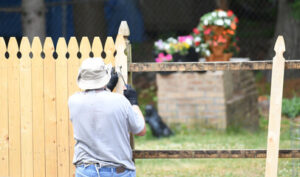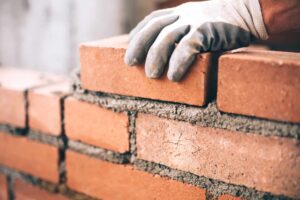Concrete stairs provide a sturdy, low-maintenance alternative to wooden ones. They are fireproof and can withstand harsh weather.

Contractors can install poured-in-place or precast steps. The latter are less costly, however, since the contractor doesn’t have to build a frame and pour concrete on site. Click Here to learn more.
Before hiring a contractor, clear the area of dirt where you plan to install the staircase. Shovels, a hand tamper and steel shims are the main tools required for excavation and construction of a frame.
Concrete is a very durable material that can be used for a wide variety of applications, including stairs. However, concrete stairs require a great deal of care to maintain their appearance and strength. Concrete stairs need to be properly constructed and sealed, and if not maintained correctly, they can become damaged over time.
If your concrete steps have been damaged, it is important to hire a professional team of concrete specialists to repair them. It is not recommended that you try to fix your stairs yourself, as it can be a difficult task that requires precise measurements and angles. A professional team will have the tools and experience needed to complete the job quickly and effectively.
The first step in replacing your concrete stairs is to prepare the area where you want them to be installed. The area should be clear of any debris and dug down to a depth of six inches. After this, gravel should be placed in the ground and tamped down tightly with a hand tamper. This will provide a stable base for your new concrete stairs.
It is also a good idea to put down 2 inches of Styrofoam before laying down the gravel, as this will help prevent frost from accumulating underneath your stairs. Styrofoam is also inexpensive and can be purchased at most home improvement stores.
Once the area has been prepared, it is time to begin constructing your new concrete stairs. Plywood frames will be built to the dimensions that you want your stairs to have, and they will be checked with a level to ensure that they are standing at exact 90 degree angles. Once the frames are built, they will be covered with tarps to keep them dry during the pouring process.
Concrete must be poured into the frame very slowly to ensure that it sets up evenly throughout the entire staircase. After the concrete is poured, steel reinforcement bars will be placed inside the staircase to strengthen it and prevent cracking. A broom finish is applied to the concrete after it has set, and a retardant may be added to slow down the curing process.
Forming
The process of building concrete stairs involves a lot of preparation and hard work. You need to have the right equipment for the job, such as a concrete mixer and concrete forms, along with other tools like rebar reinforcement and sealers. You also need to know how to shape concrete properly so that the stairs have a good finish and are safe to use. Before starting, you should plan your project and create the outline of the steps. This is important because it will help you to estimate the amount of materials that you need and how steep your stairs will be. Once you have the outline, it’s time to start the forming process.
You need to make sure the form boards are level and plumb. To do this, screw them together using screws instead of nails because pounding on nails can knock the plywood out of position. Also, check that the side form plywood pieces are level from one end to the other. You can use a large speed square to do this, or you can simply measure diagonally from one corner to the opposite corners. You should also add a 2×4 called a strongback to the front of each of the riser form boards so they stay secure under pressure from the concrete.
If the stair is on a hill or slope, you may need to dig out the footings so that they’re deep enough to hold the concrete. If you’re not sure how deep to dig, you can check your local building code or consult a professional. Once the footings are in place, lay down rebar to give the concrete extra strength.
Once the rebar is in, you’ll need to build the stringer forms, which are the vertical sides of the stairs. You can use 2x8s or 3/4 inch plywood for these. The length of the stairs will determine how many stringer forms you need. You should also make sure the stringer forms are aligned correctly with your home’s foundation.
Once you’ve finished the stringer forms, you can begin preparing the riser forms for the concrete. Before pouring the concrete, it’s a good idea to put some retardant on your form walls and rock to prevent them from drying too quickly. This will also keep the concrete from leaking out of the forms during the curing process.
Pouring
Concrete stairs can add beauty and function to your home. They can also increase the property value of your home and make it easier to access your backyard or driveway. They are also long-lasting and durable, making them a smart investment for homeowners. However, like all outdoor structures, they must be maintained over time to ensure their longevity and safety. This maintenance includes resurfacing the steps. Resurfacing your concrete steps with new concrete is a cost-effective way to give your exterior an updated look and improve your curb appeal.
The first step in building a set of concrete stairs is to prepare the site. To do this, stake out the location of your steps by driving a wooden stake into the ground at each corner. Hammer in the stakes and measure from each one to mark a level line on the foundation for the bottom of the steps.
Once the area is prepared, it’s time to pour the concrete. This can be done either by mixing the concrete yourself or calling a redi-mix concrete company to do it for you. Regardless of which method you choose, it’s important to agitate the concrete during the pour to ensure that it fills every nook and cranny. Once the concrete is poured, you can begin to finish the surfaces using hand floats and edging tools.
You should plan to spend two to three days planning, laying out and pouring a set of concrete steps (not counting curing time). If you’re planning on doing the work yourself, consider the fact that concrete is heavy and requires lifting equipment. If you don’t have this equipment, it’s best to hire a professional.
Finished concrete offers the best fire resistance of any building material and will protect your home from harm in the event of a fire. It’s also resistant to water, mold, and mildew. Furthermore, it’s safe for people with allergies and asthma, because it doesn’t emit any toxic fumes during a fire or if it’s exposed to extreme heat.
While a concrete staircase isn’t an easy project for the average homeowner, it can be done with some help from friends and family members. If you’re a novice, it may be a good idea to practice on a smaller concrete project before trying to build stairs.
Finishing
Concrete steps are a sturdy and durable addition to any home. They’re also an easy way to improve the overall appearance of your property, and can make getting around your home safer and more convenient. But installing concrete steps is no small project. The process requires careful planning, building a form, pouring and finishing the stairs. It’s a labor-intensive venture that can be dangerous for a do-it-yourselfer, so it’s best to hire a professional concrete contractor.
Before starting the steps, a mason must dig down and prepare the area for pouring. This involves removing any existing steps and digging down to the proper depth. Next, gravel is added to the area and tamped down, creating a base for the new steps. After the stair area is prepped, steel reinforcement bars are inserted into the concrete. These help prevent the staircase from cracking and are arranged according to the required strength for each step.
After the concrete has cured, a mason can start on the finishing process. First, a broom finish is applied to the surface of the concrete. This makes the stairs smooth and adds a visual appeal. Concrete can dry out quickly, so the mason must sprinkle it with water or cover it with plastic to keep it moist.
If the concrete is exposed to the elements, a waterproof sealer is applied. The mason may also add expansion or contraction joints in the concrete to prevent unsightly cracking. These are made with a groover or by cutting lengths of wood, metal or preformed joint material.
For a clean and finished look, the mason can trowel the surface of the stairs. This process creates a fine texture and makes the steps more slip resistant. The mason can also add a pattern or color to the concrete for an added touch of customization.
If the stairs are to be placed at a construction site, they will need to be anchored in place with rebar or concrete anchors. These are fastened to the concrete slab or foundation wall, and are used to hold the weight of the steps. Some local governments and building codes require that the stairs be secured to reduce the risk of them swaying or falling over time.





